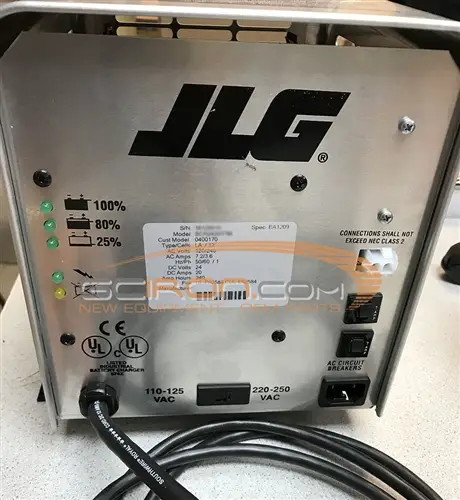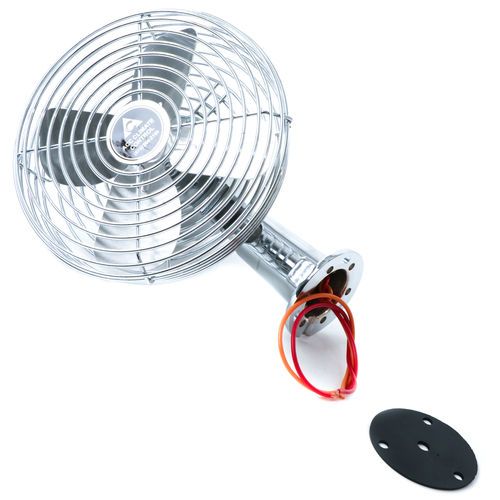Maf Sensor Troubleshooting: Ultimate Guide to Fixing Issues
Are you struggling with your car’s performance? The MAF sensor could be the culprit.
This small but vital component measures the air entering your engine, ensuring it runs smoothly. Understanding how to troubleshoot a MAF sensor can save you time and money. A faulty MAF sensor can lead to poor fuel economy, rough idling, or even stalling.
Knowing the signs of a bad MAF sensor and how to address them can keep your vehicle running efficiently. In this guide, we will delve into common issues, symptoms, and practical solutions for MAF sensor problems. By the end, you’ll be equipped with the knowledge to diagnose and fix MAF sensor issues, ensuring your car’s optimal performance. Let’s get started!

Credit: www.advancedautostanwood.com
Introduction To Maf Sensor
MAF sensor troubleshooting helps in identifying issues with your car’s air intake system. It ensures efficient engine performance and fuel economy. Proper diagnosis can prevent potential engine problems.
The Mass Air Flow (MAF) sensor plays a critical role in your vehicle. It measures the amount of air entering the engine. This data helps the engine control module (ECM) adjust the fuel injection. Proper fuel injection ensures optimal engine performance. When the MAF sensor malfunctions, the engine can suffer.Purpose Of Maf Sensor
The MAF sensor helps the engine run smoothly. It provides accurate air intake readings. The ECM uses this information to balance air and fuel. This balance is crucial for efficient combustion. It improves fuel economy and reduces emissions.Symptoms Of Maf Sensor Issues
Symptoms of a faulty MAF sensor vary. Common signs include poor acceleration. The engine may hesitate or stall. Fuel economy often drops. Sometimes, the vehicle has trouble starting. The check engine light may illuminate. Addressing these issues promptly can prevent further damage. “`
Credit: www.youtube.com
Common Maf Sensor Problems
The Mass Air Flow (MAF) sensor is a critical component in your vehicle. It measures the amount of air entering the engine. This information is essential for the engine control unit (ECU) to balance and deliver the correct fuel mass to the engine. When the MAF sensor fails, it can cause various issues, from poor fuel economy to engine misfires. Let’s dive into some common MAF sensor problems.
Contamination
One of the most common issues with MAF sensors is contamination. Dirt, dust, and debris can accumulate on the sensor over time. This buildup can affect the sensor’s ability to accurately measure airflow.
- Symptoms: Poor acceleration, rough idle, and reduced fuel efficiency.
- Solution: Clean the MAF sensor using a specialized cleaner. Avoid touching the sensor elements to prevent damage.
Wiring Issues
Wiring problems can also lead to MAF sensor issues. Damaged or corroded wires can disrupt the signal between the sensor and the ECU.
- Symptoms: Check engine light, intermittent power loss, and irregular engine behavior.
- Solution: Inspect the wiring harness for damage. Replace or repair any faulty wires.
Sensor Failure
Sometimes, the MAF sensor itself can fail. This can happen due to wear and tear or an internal fault.
- Symptoms: Engine stalls, poor fuel economy, and difficulty starting the engine.
- Solution: Test the sensor using a multimeter. If it’s faulty, replace the MAF sensor.
Understanding these common MAF sensor problems can help you diagnose and fix issues early. This ensures your vehicle runs smoothly and efficiently.
Diagnosing Maf Sensor Issues
When your vehicle shows poor performance, the MAF sensor might be the culprit. Diagnosing MAF sensor issues is crucial. It helps in pinpointing the root cause. Below are effective methods to diagnose MAF sensor problems.
Reading Error Codes
The first step is to read the error codes. Use an OBD-II scanner. It connects to your car’s computer. This device will show specific error codes related to the MAF sensor. Common codes include P0100, P0101, P0102, P0103, and P0104. These codes indicate problems like circuit malfunction, range issues, or low/high input.
Visual Inspection
Perform a visual inspection of the MAF sensor. Ensure the sensor and its wires are intact. Look for any visible signs of damage. Dirt and debris can affect the sensor’s performance. Clean the sensor gently if it’s dirty. Check the sensor’s housing for cracks or leaks.
Functional Testing
Functional testing of the MAF sensor helps in verifying its performance. Follow these steps:
- Start the engine and let it run.
- Use a multimeter to measure the sensor’s voltage output.
- Compare the readings with the manufacturer’s specifications.
- If the readings are off, the sensor might be faulty.
You can also perform a tap test. Gently tap the MAF sensor while the engine is running. If the engine stumbles or stalls, the sensor might be defective.
| Step | Description |
|---|---|
| 1 | Read error codes using an OBD-II scanner. |
| 2 | Conduct a visual inspection for any damage or dirt. |
| 3 | Perform functional testing using a multimeter. |
Diagnosing MAF sensor issues involves reading error codes, performing visual inspections, and conducting functional tests. Following these steps ensures accurate diagnosis and helps keep your vehicle running smoothly.
Cleaning The Maf Sensor
Cleaning the MAF (Mass Air Flow) sensor is essential for a car’s performance. A dirty MAF sensor can cause poor fuel economy and engine problems. Regular cleaning helps maintain optimal performance. Here’s how you can clean it effectively.
Tools Needed
- MAF sensor cleaner
- Screwdriver
- Gloves
- Safety goggles
- Lint-free cloth
Step-by-step Cleaning Process
- Turn off the engine and remove the car key.
- Locate the MAF sensor. It is usually near the air filter box.
- Use the screwdriver to carefully remove the sensor.
- Put on gloves and safety goggles.
- Spray the MAF sensor cleaner on the sensor. Avoid touching the sensor.
- Let the sensor dry completely. This may take 15-20 minutes.
- Reinstall the MAF sensor back into its place.
- Start the engine and check for any improvements.
Precautions
- Do not use any other cleaner. Only use MAF sensor cleaner.
- Handle the sensor with care. It is delicate and can break easily.
- Ensure the sensor is completely dry before reinstalling.
- Wear safety gear to protect your eyes and skin.
- Do not force the sensor during removal or installation.
Repairing And Replacing Maf Sensor
Repairing and replacing a MAF sensor can be a simple task. But it needs attention to detail. A faulty MAF sensor can cause many issues for your car. These issues include poor fuel economy and sluggish performance. Fixing or replacing the MAF sensor can solve these problems. Let’s dive into the steps and options available.
Identifying Replacement Parts
First, find the right replacement parts. Check your car’s manual for the exact model of the MAF sensor. You can also search online using your car’s make and model. Ensure the replacement part matches the specifications. Using the wrong part can lead to more issues.
Diy Replacement Guide
Replacing the MAF sensor yourself can save money. Start by locating the sensor in your car. It is usually near the air filter box. Disconnect the battery to avoid any electrical issues. Carefully remove the old sensor. Install the new one by following the reverse steps. Reconnect the battery and start your car. Check if the issues are resolved.
When To Seek Professional Help
Sometimes, DIY isn’t enough. If you feel unsure, seek professional help. A mechanic can diagnose and fix the issue accurately. They have the tools and experience. This can prevent further damage to your car. Safety and peace of mind are important.

Credit: www.mpgtuning.co.uk
Preventing Future Issues
Preventing future issues with your MAF sensor is crucial for a smooth-running engine. Regular maintenance and quality parts can save you from costly repairs. Follow these simple tips to keep your MAF sensor in top shape.
Regular Maintenance Tips
Regular maintenance is key to preventing MAF sensor problems. Check your air filter every month. Replace it if it is dirty. Clean the MAF sensor every six months. Use a special MAF sensor cleaner. Avoid touching the wires inside the sensor.
Inspect your engine for any leaks. Fix them immediately. Leaks can damage the MAF sensor. Keep your engine clean. Dirt and debris can harm the sensor.
Quality Fuel And Air Filters
Invest in quality fuel and air filters. Cheap filters can cause problems. Use filters recommended by your car manufacturer. Change your air filter every 12,000 to 15,000 miles. Change your fuel filter every 30,000 miles.
Check the filter housing for damage. Replace it if needed. A good filter housing ensures a tight seal. This keeps dirt out. Your MAF sensor will thank you.
Impact Of A Faulty Maf Sensor
The Mass Air Flow (MAF) sensor plays a crucial role in your car’s engine. It measures the amount of air entering the engine. A faulty MAF sensor can lead to serious issues. It affects engine performance, fuel efficiency, and emissions. Understanding these impacts helps in timely troubleshooting.
Engine Performance
A faulty MAF sensor can cause poor engine performance. Your car might struggle to start. It can also idle roughly or stall. Acceleration may become sluggish. This happens because the engine gets incorrect air-fuel ratios. It can lead to misfires and hesitation. These symptoms affect your driving experience.
Fuel Efficiency
Fuel efficiency can drop with a bad MAF sensor. The engine may burn too much fuel. This results in frequent trips to the gas station. An incorrect air-fuel mix leads to inefficient combustion. It wastes fuel and costs more money. Keeping an eye on fuel consumption can alert you to a MAF issue.
Emissions
A faulty MAF sensor increases harmful emissions. The engine may release more pollutants. This impacts the environment. It can also cause your car to fail emissions tests. A proper air-fuel mix is crucial for clean exhaust. Regular checks of the MAF sensor help maintain low emissions.
Faqs On Maf Sensor Troubleshooting
Having trouble with your Mass Air Flow (MAF) sensor? You’re not alone. Many car owners face issues with their MAF sensors. To help, we’ve compiled a list of common questions and expert answers. Read on to find solutions to your MAF sensor problems.
Common Questions
| Question | Answer |
|---|---|
| What are the symptoms of a faulty MAF sensor? | Rough idling, poor fuel economy, and engine stalling. |
| Can I drive with a bad MAF sensor? | It’s not recommended. It can lead to more severe engine damage. |
| How often should I clean the MAF sensor? | Every 12,000 to 15,000 miles or once a year. |
| What causes MAF sensor failure? | Contamination, electrical issues, or mechanical damage. |
Expert Answers
What are the symptoms of a faulty MAF sensor?
A faulty MAF sensor can cause several issues. These include rough idling, poor fuel economy, and engine stalling. If you notice these symptoms, check the MAF sensor.
Can I drive with a bad MAF sensor?
Driving with a bad MAF sensor is not recommended. It can lead to severe engine damage. It’s best to address the issue as soon as possible.
How often should I clean the MAF sensor?
Clean the MAF sensor every 12,000 to 15,000 miles. You can also clean it once a year. This helps maintain optimal performance and fuel efficiency.
What causes MAF sensor failure?
MAF sensor failure can happen due to several reasons. Common causes include contamination, electrical issues, or mechanical damage. Regular maintenance can help prevent these issues.
Frequently Asked Questions
What Is A Maf Sensor?
A MAF sensor measures the amount of air entering the engine. It helps adjust fuel injection for optimal performance.
How Do I Know If My Maf Sensor Is Faulty?
Common signs include rough idling, poor fuel economy, and engine stalling. A check engine light may also appear.
Can I Clean A Dirty Maf Sensor Myself?
Yes, you can. Use a MAF sensor cleaner. Be gentle and avoid touching the sensor wires.
What Happens If I Ignore A Bad Maf Sensor?
Ignoring it can cause engine performance issues. It can also lead to more serious engine damage over time.
How Often Should I Replace My Maf Sensor?
Typically, every 50,000 to 80,000 miles. Check your vehicle’s manual for specific recommendations.
Conclusion
Regular maintenance of your MAF sensor can prevent many issues. Always check for dirt or damage. Clean it properly with the right cleaner. Replace it if necessary. This keeps your engine running smoothly. Troubleshooting saves time and money. Remember to consult your vehicle manual.
Stay proactive and keep your car in top shape. A well-maintained MAF sensor ensures better performance and fuel efficiency. Happy driving!





